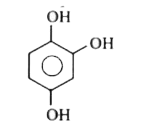The weakest inter molecular forces are present in:
HF
HCl
HBr
HI
The correct Answer is:B
To determine which hydrogen halide has the weakest intermolecular forces, we need to analyze the nature of the intermolecular forces present in each compound: HF, HCl, HBr, and HI.
1. Identify the Compounds: We have four hydrogen halides: HF (hydrogen fluoride), HCl (hydrogen chloride), HBr (hydrogen bromide), and HI (hydrogen iodide).
2. Understand Intermolecular Forces: The primary intermolecular forces in these compounds are dipole-dipole interactions and hydrogen bonding. Hydrogen bonding is particularly strong in HF due to the high electronegativity of fluorine.
3. Analyze Electronegativity:
- HF: Fluorine is the most electronegative element, leading to strong hydrogen bonding.
- HCl: Chlorine is less electronegative than fluorine, resulting in weaker dipole-dipole interactions than HF.
- HBr: Bromine is less electronegative than chlorine, leading to even weaker dipole-dipole interactions than HCl.
- HI: Iodine is the least electronegative among these halogens, resulting in the weakest dipole-dipole interactions.
4. Consider Atomic Size and Bond Length: As we move down the group from fluorine to iodine, the size of the halogen atoms increases, leading to longer bond lengths. Longer bond lengths generally result in weaker intermolecular forces because the distance between the interacting dipoles increases.
5. Order of Weakness: Based on the above analysis, the order of intermolecular forces from strongest to weakest is:
- HF (strongest due to hydrogen bonding)
- HCl (weaker dipole-dipole interactions)
- HBr (weaker than HCl)
- HI (weakest due to the largest atomic size and longest bond length)
6. Conclusion: Therefore, the weakest intermolecular forces are present in HI (hydrogen iodide).
Final Answer:
The weakest intermolecular forces are present in HI.
- HF: Fluorine is the most electronegative element, leading to strong hydrogen bonding.
- HCl: Chlorine is less electronegative than fluorine, resulting in weaker dipole-dipole interactions than HF.
- HBr: Bromine is less electronegative than chlorine, leading to even weaker dipole-dipole interactions than HCl.
- HI: Iodine is the least electronegative among these halogens, resulting in the weakest dipole-dipole interactions.
- HF (strongest due to hydrogen bonding)
- HCl (weaker dipole-dipole interactions)
- HBr (weaker than HCl)
- HI (weakest due to the largest atomic size and longest bond length)
The weakest intermolecular forces are present in HI.
Topper's Solved these Questions
Similar Questions
Knowledge Check
The weakest interparticle forces are present in
Athemosetting polymersBthemoplastic polymersCfibresDelastomersAmong the following polymers, the strongest molecular forces are present in
AelastomersBfibresCthermoplasticsDthermosetting polymers
Which solid will have the weakest intermolecular forces?
View SolutionThe weakest acid is
View SolutionIntermolecular force present in nylon-6, 6 is
View SolutionInter-calated discs are present in
View SolutionTrue or False: The intermolecular force is the weakest in solids.
View SolutionThe intermolecular forces of attraction (i.e., H-bonding and van der waal's forces) exist among polar and non-polar species which effect melting point, boiling point, solubility and viscosity of covalent compounds :
Q.The type of molecular force of attraction present in the following compounds is :
View Solution
